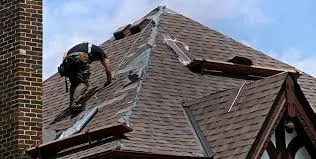Vinyl plank flooring has become a popular choice for homeowners due to its affordability, durability, and modern designs. Whether you’re a DIY enthusiast or looking to hire professionals for vinyl plank flooring installation, understanding the process and associated costs is essential. This guide covers everything you need to know about installing vinyl plank flooring and finding local installers who offer quality work at reasonable prices.
Table of Contents
How to Install Vinyl Plank Flooring and Understanding the Costs of Local Installers

What Is Vinyl Plank Flooring?
Vinyl plank flooring is a synthetic flooring material designed to mimic the look of hardwood. It’s waterproof, scratch-resistant, and easy to maintain, making it ideal for high-traffic areas like kitchens, bathrooms, and hallways. Available in various styles, colors, and textures, vinyl plank flooring is versatile and suits nearly every home design.
Benefits of Vinyl Plank Flooring
- Affordability: Less expensive than hardwood or tile.
- Durability: Resistant to water, stains, and wear.
- Ease of Installation: DIY-friendly with click-and-lock systems.
- Low Maintenance: Simple to clean with minimal upkeep required.
- Stylish Options: Wide variety of colors and textures to fit any decor.
How to Install Vinyl Plank Flooring
Step 1: Gather Tools and Materials
Before starting, ensure you have the necessary tools:
- Utility knife
- Tape measure
- Straightedge or T-square
- Spacers
- Rubber mallet
- Underlayment (if required)
Step 2: Prepare the Subfloor
A smooth, clean subfloor is crucial for a successful installation. Remove old flooring, vacuum debris, and ensure the surface is even. For uneven subfloors, use a leveling compound.
Step 3: Measure and Plan
Measure the room's dimensions to calculate how much flooring you'll need. Plan the layout to avoid awkward cuts or small planks at the edges. Leave a 1/4-inch gap around the room’s perimeter to allow for expansion.
Step 4: Lay the First Row
Start in a corner and work your way across the room. Connect the planks using the click-and-lock mechanism or adhesive, depending on the product type. Ensure the first row is straight and aligned.
Step 5: Install Remaining Rows
Stagger the seams by cutting the first plank of every second row. This not only looks better but also adds stability. Use spacers to maintain the expansion gap around the edges.
Step 6: Trim and Finish
Cut the last row of planks to fit. Install baseboards or quarter-round molding to cover expansion gaps. Clean the surface, and you’re done!
Professional Vinyl Plank Flooring Installation
For those who prefer professional help, hiring local installers ensures a high-quality finish with minimal hassle. When searching for local professionals, consider these factors:
- Experience: Choose installers with proven expertise in vinyl plank flooring.
- Reviews: Check online reviews and ratings to gauge reliability.
- Pricing: Request detailed quotes from multiple installers.
- Warranty: Ensure the work comes with a warranty for peace of mind.
Understanding the Costs of Vinyl Plank Flooring Installation
The cost of installing vinyl plank flooring depends on factors such as labor rates, material type, and project complexity. Here’s a breakdown of typical costs:
| Expense Category | Details | Average Cost (Per Sq. Ft.) |
|---|---|---|
| Vinyl Plank Flooring | Cost of materials (varies by quality) | $1.50 - $5.50 |
| Underlayment | Optional, for added comfort and soundproofing | $0.50 - $1.50 |
| Professional Installation | Labor costs for local installers | $2.00 - $5.00 |
| Additional Preparation | Removing old flooring or leveling subfloor | $1.00 - $3.00 |
For a 500-square-foot room, expect to pay:
- DIY Installation: $750 - $2,750 (materials + tools).
- Professional Installation: $2,000 - $4,750 (materials + labor).
Pros and Cons of DIY vs. Professional Installation
DIY Installation
Pros:
- Cost savings on labor.
- Flexibility to work at your own pace.
- Sense of accomplishment.
Cons:
- Time-consuming.
- Potential for mistakes that can compromise quality.
- Requires proper tools and skills.
Professional Installation
Pros:
- Expert precision and faster completion.
- Warranty on labor and materials.
- Saves time and reduces stress.
Cons:
- Higher upfront cost.
How to Find Local Installers for Vinyl Plank Flooring
When searching for vinyl plank flooring installation experts, follow these tips:
- Ask for Recommendations: Friends and family can provide reliable referrals.
- Online Directories: Use platforms like Yelp, Angi, or HomeAdvisor to find top-rated installers near you.
- Request Quotes: Get estimates from at least three contractors to compare services and pricing.
- Check Credentials: Verify licensing, insurance, and experience.
- Read Reviews: Look for positive testimonials and a history of satisfied customers.
Tips to Save on Installation Costs
- Prepare the Area: Remove furniture and old flooring yourself to reduce labor charges.
- Buy in Bulk: Purchase materials in bulk for potential discounts.
- Off-Season Deals: Installers may offer discounts during slower seasons.
- Compare Quotes: Shop around for the best combination of price and quality.
Conclusion
Installing vinyl plank flooring is an excellent way to enhance the look and functionality of your home. Whether you choose a DIY approach or hire professionals for vinyl plank flooring installation, understanding the process and associated costs ensures a smooth and successful project. By researching local installers and comparing prices, you can achieve a stunning floor upgrade without breaking the bank.
Explore

Discover the Best Home Services: Install, Repair & Remodel Near You

The 10 Best Carpet Installers Near Me (with Free Quotes)

Elevate Your Space with the Top Flooring Companies in the USA

Best Flooring Installation Contractors Near Me: Top Choices for Quality Work

The Best Hardwood Flooring Contractors Near You

Finding the Best Laminate Flooring Installation Near You | 2025 Cost Guide

Find Best Local Roofers & Roofing Contractors Near Me

Find the Right Therapist For Anxiety and Depression Near You
